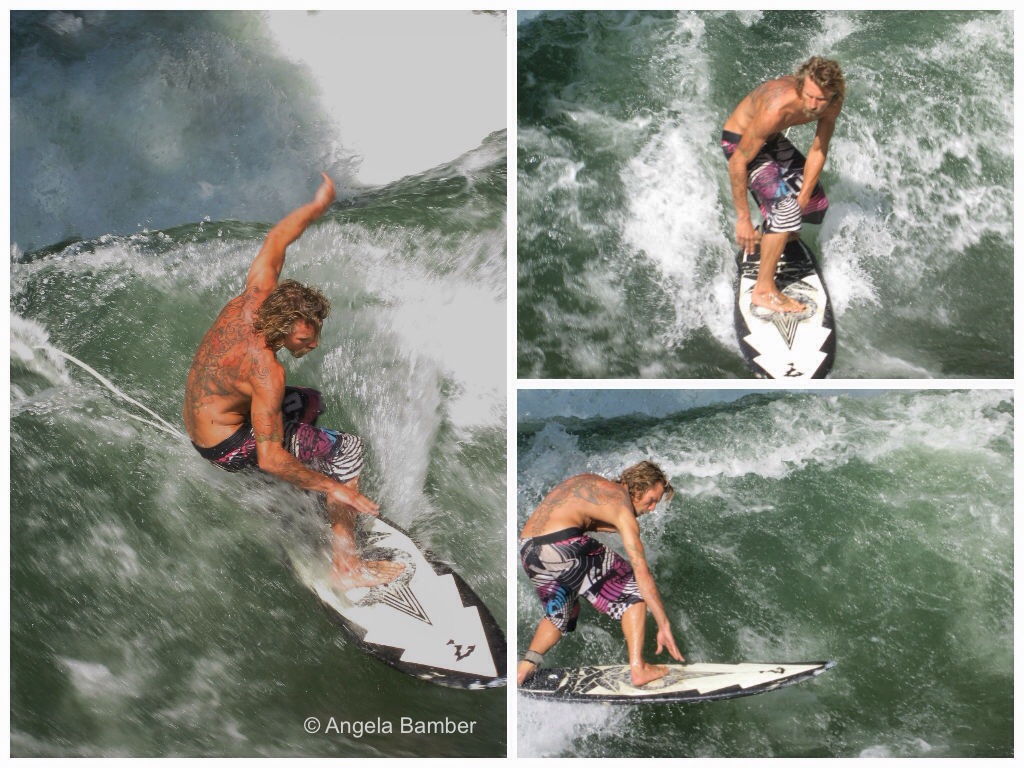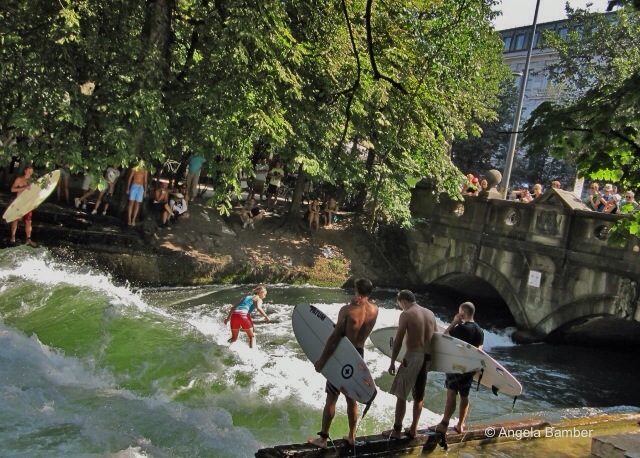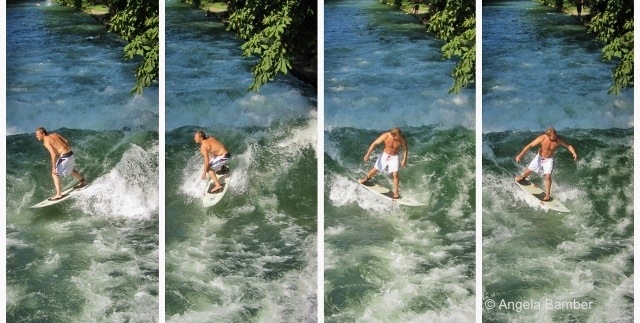When you think of surfing hotspots the River Eisbach in Munich does not immediately spring to mind, but it is one of the world’s most popular river surf spots. In fact, the Eisbach wave is credited with the birth of the global river surfing phenomenon.
Eisbach wave
The Eisbach wave — Eisbach is literally translated as “ice brook” — sits in the middle of Munich near the southern edge of the Englischer Garten (English Garden) park.
With river surfing, the wave is stationary on the river. This is caused by a high volume of water constricted at a set point.
In the Eisbach, the concrete baffles, which were laid in the 1970's to restrict the river's flow, are responsible for the wave.
Local surfers have engineered a cleaner, taller wave by attaching ropes between the bridge and submerged planks to form two large 'U' shapes.
Local surfing history
The sport started here in the 1970s, when a small group of guys fashioned large planks of wood into boards and attached tow-ropes to the Prinzregentenstraße Bridge. They held onto the ropes and tried to stand up. Eventually, trial and error revealed that they didn’t need the ropes to stay on the wave and river surfing was born.
Since the late 80s and 90s there has been a surge in popularity for the sport. Today, up to 100 surfers a day visit the man-made river.
Not for novices
The Eisbach is not a wave for the inexperienced surfer. It is around 1m high and 12m wide. The water flows at a rate of 20 tons per second, and the temperature never gets above 15 degrees Celsius (or 60 degrees Fahrenheit).
Riverbreak, the international river surf magazine, highlights the two main dangers: the concrete baffles behind the wave and the fast current in combination with the rocky river banks. Crashing into either can cause serious, even fatal, injuries.
Over the years, there have been many serious injuries, including the complete loss of a kneecap, a broken shoulder, and a ruptured artery and partial amputation of a leg.
Jumping from the bridge into the shallow wave is also extremely dangerous. Someone attempted this in June 2003, and suffered permanent spinal injuries.
There have been deaths in the river, but these people were swimmers not surfers. Subsequently, swimming here is banned.
River surfing
Surfing in the ocean and surfing in a river are two very different propositions.
High profile ocean-surfers like Kelly Slater have surfed the Eisbach wave and discovered that even they have to adapt and learn new skills.
There is no time to get up and let the wave approach – river-surfers have to be riding the wave the second they hit the water. They must jump from the bank onto the board, which is thrown down onto the water in front of them like a skateboard.
Once on the wave the river-surfers' movements are lateral rather than up and down on the break as in ocean surfing.
Ocean-surfers fight to move forward on waves. River-surfers have to avoid going backwards.
Even the most commonplace skills for an ocean-surfer, like paddling through big surf, duck-diving the swell, vying for position in the line-up, dropping into waves, popping-up, are useless talents for the river-surfer.
River surf boards
Jon Ruppersberg, who repairs boards at the Santo Loco surf shop in central Munich, said river surfing requires a different type of board.
“A long board is usually perfect for beginners, but because the river is so narrow, you have to start the next turn as soon as you finish the last.”
Many of the boards are specially made in Salzburg, Austria, and are designed to be short, relatively broad and durable. Some also have Kevlar edges to prevent damage from regularly crashing against the Eisbach’s stonewall banks.

Official recognition
Up until the summer of 2010, surfing in the English Garden was forbidden - at least officially. The passtime was not recognised as a sport and it was deemed too dangerous. Surfers were often chased by the police.
Year's of lobbying by the local river-surfing community and a sharp increase in the sport's popularity saw an official change of heart. Munich's Environment Secretary Joachim Lorenz explained just why the city intervened to make the Eisbach available to surfers.
"It adds to the image of the city. We're a cosmopolitan city that loves sports, and we're proud to have what is probably the world's largest urban surfing spot," Lorenz said.
Munich now hosts the annual European Championship in Stationary Wave Riding.
Keep Surfing
The Eisbach wave featured in the 2011 movie 'Keep Surfing' by Björn Richie Loeb.
The film looks at Munich's river surfing community, and follows six very different characters who all share a passion for 'going against the flow'.
Munich's surf spots
The Eisbach surf spot is located at the bridge near the crossing at Prinzregentenstraße/Bruderstraße. Head to the southern end of the English Garden park, next to the modern art museum.
There are two other surf spots in Munich. Floßlände in Thalkirchen, this is more of a beginners' surf wave, and the River Isar at Wittelsbacherbrücke, but this is for very advanced surfers and is only possible when the waterline is high.



